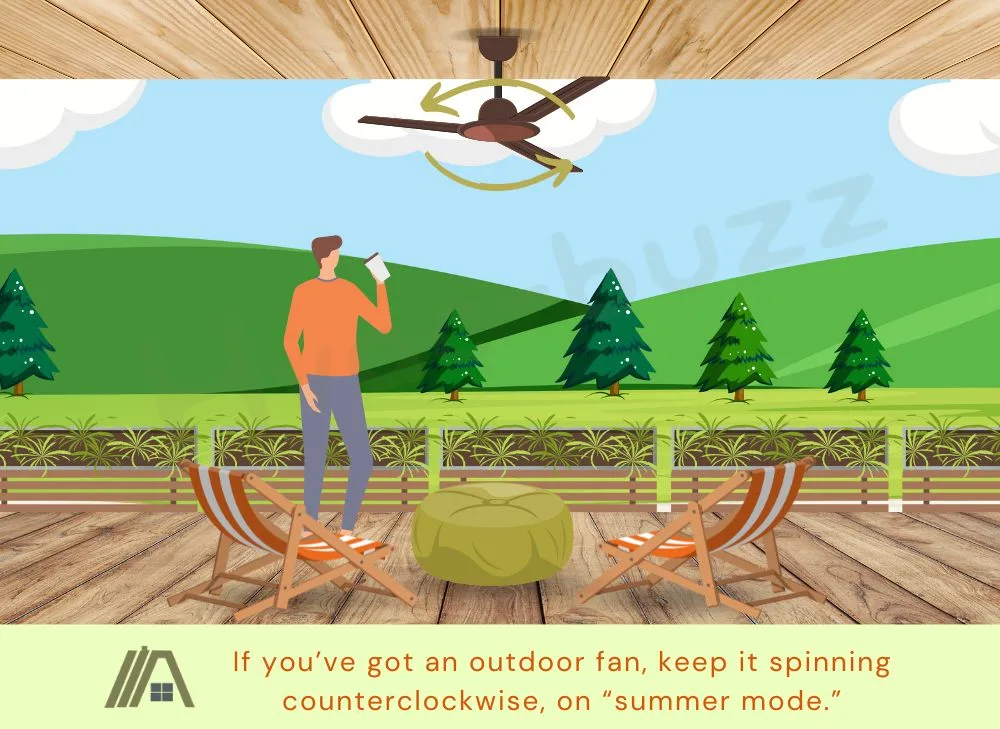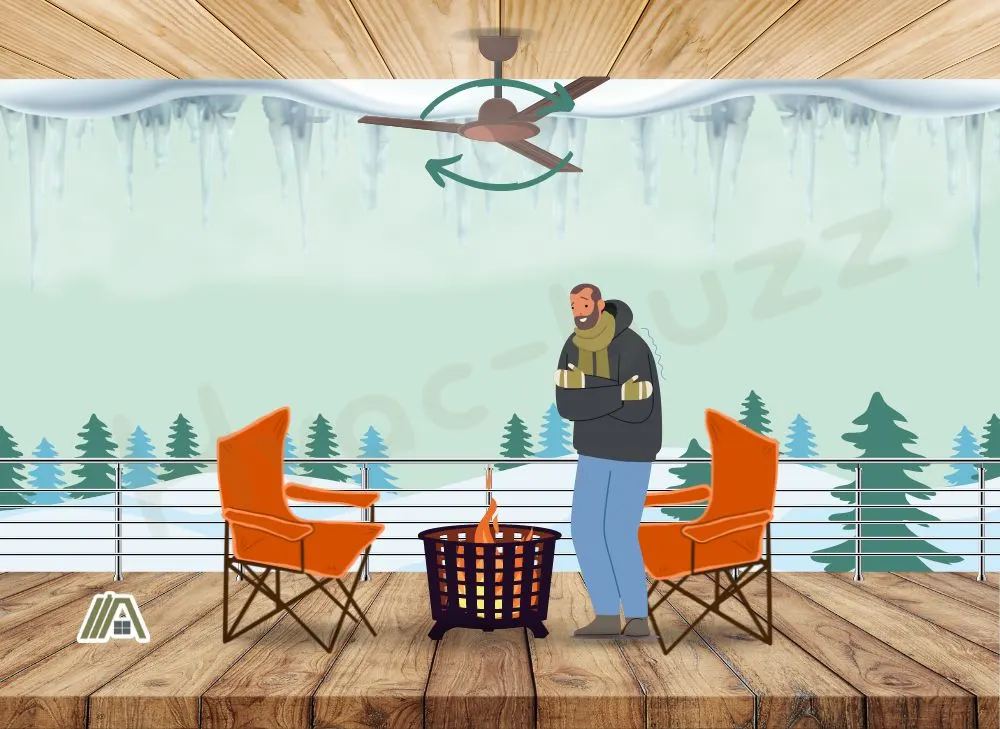The direction of rotation for ceiling fans during summer and winter is frequently discussed (in the ceiling fan world, at least) and undisputed. However, I started to wonder what direction would work best in a variety of different situations, including if the same seasonal rules applied outdoors.
Outdoor ceiling fans should turn counterclockwise and only be used in warm summer. If you’re curious about why your fan’s use is limited in this way, read on to learn about how fan direction works and why it matters.

Outdoor ceiling fans will only be useful in summer. In summer, they should be set to rotate counterclockwise to create a downdraft that introduces wind chill.
Set Outside Fans To Rotate Counterclockwise
If you’ve got an outdoor fan, keep it spinning counterclockwise, on “summer mode.” You’ll never need to change it! We’ll explain why you don’t want to use winter mode in a moment, but let’s first look at how summer mode is useful!

When fans rotate counterclockwise, they create a downdraft. While this doesn’t actually alter the temperature of the air that it moves, it certainly helps you to feel cooler thanks to the wind chill effect.
This wind chill effect works by drawing heat away from the body. The same way you might blow on a hot meal to cool it down faster, the air blows the heat your body creates away and keeps it from stagnating around you.
This is not the same as evaporative cooling (although fan’s can help with this too!), which a process that operates on the fact that water absorbs a large amount of heat when it evaporates. When it does evaporate, it takes this heat with it, thereby cooling the area that it leaves behind.
Are They Effective Outside?
Fans are certainly effective when it comes to keeping you more comfortable in the outdoor heat, and they work the same way indoors and outdoors, by using the wind chill effect to keep heat from settling around you.
In fact, fans are more effective than ACs when it comes to keeping you cool outdoors!
Outside, there’re no walls or insulation to contain the cooled air that an AC creates. This means any cooled air will simply dissipate into the great outdoors, and unless you’re directly next to the AC or your outdoor space is fairly enclosed, you likely won’t notice much difference.
Fans however, will keep you feeling cooler as long as you’re under them.
That said, outdoor fans can have limitations. Depending on your fan’s model and the height it’s installed at, it may or may not be powerful enough to push the downdraft all the way down to you.
If you have yet to purchase a fan, be sure to check how powerful each fan is. You want to make sure your fan’s strength is appropriately matched to the height of the location you want it to be installed!
Clockwise Rotation Option is Useless Outside
“Winter mode,” or clockwise rotation, simply cannot make the outdoors more comfortable when the weather gets chilly.
To understand that, let’s take a look at how exactly clockwise rotation is meant to work indoors.
As we already know, when fans turn counterclockwise they create a cooling downdraft. When they turn clockwise, however, they create an updraft instead.
This updraft displaces the air that settles at the top of a room, pushing it down the walls. Since warm air rises naturally, the air that has settled at the top of the room is warmer than the cooler air at the bottom. When the warm air is pushed down the walls, it reaches the bottom of the room, where people can feel it.
Outside, however, this method will not work for a number of reasons.
For starters, the air outdoors in winter is likely far colder than the air indoors as a whole. This includes the slightly “warmer” air that might gather at the roof of a covered porch, patio, or similar structure, which likely won’t be very warm at all!

The supply of cold air is also virtually unlimited, since nothing is enclosed. Once any “warmer” air is displaced by the fan, it will mix with this massive supply of cold air and any difference in temperature in the air around you isn’t likely to be noticeable.
Additionally, with no walls or insulation, this warmer air may simply “escape” the area altogether once displaced.
All that to say, once more, your outdoor ceiling fan is essentially useless in cold weather. Keep it set to spin counterclockwise and use it to keep cool in summer! If you want to go outdoors, it’s best to simply layer up.
Sources
https://www.baltimoreaircoil.com/evaporative-cooling
https://www.gohermitage.com/blog/counterclockwise-fan-direction-for-cool-summer-savings/
https://hvacrguy.com/can-a-portable-ac-be-used-outside/
https://science.howstuffworks.com/nature/climate-weather/atmospheric/question70.htme/
https://www.seeleyinternational.com/us/commercial/what-is-evaporative-cooling/

